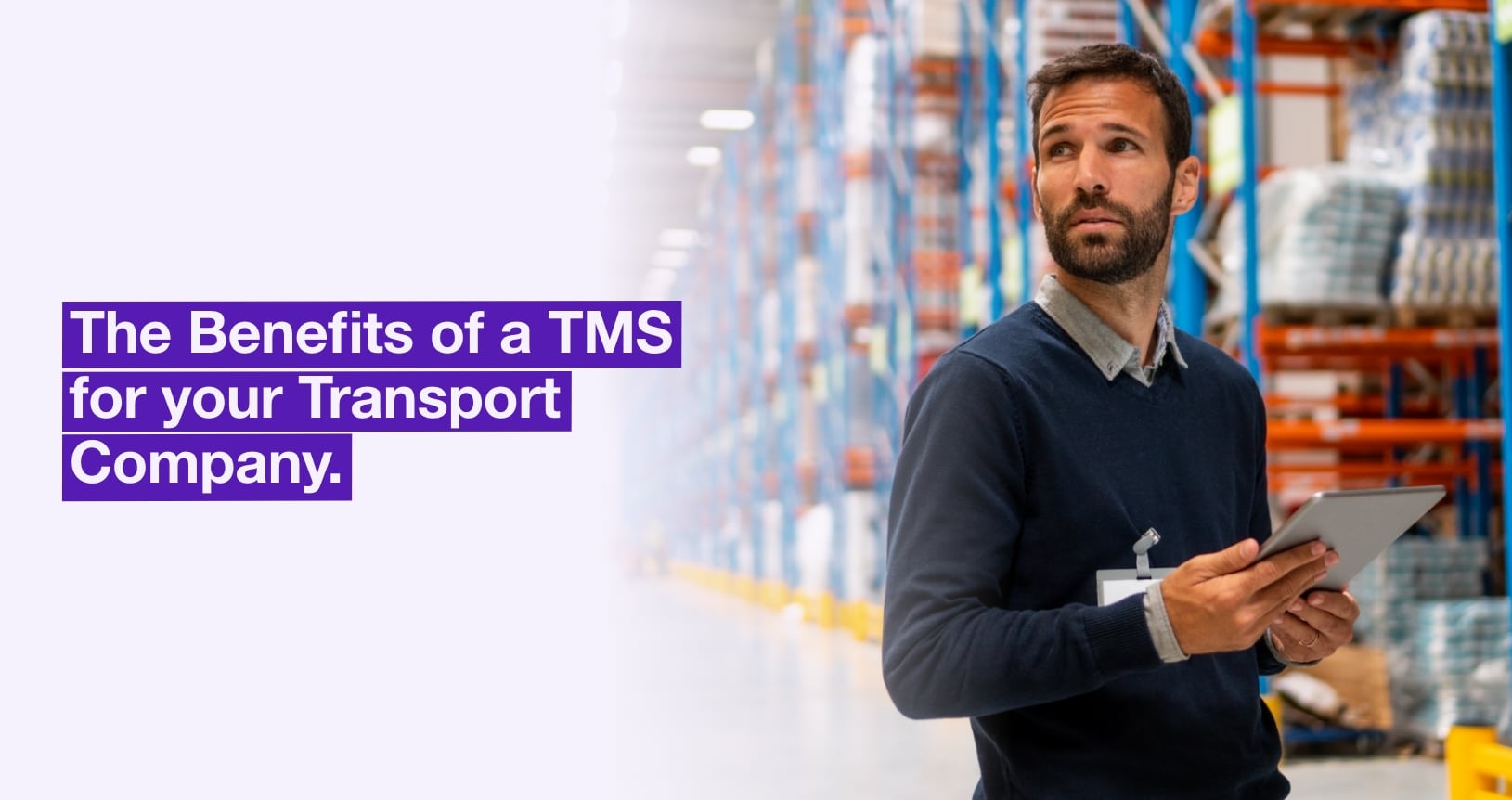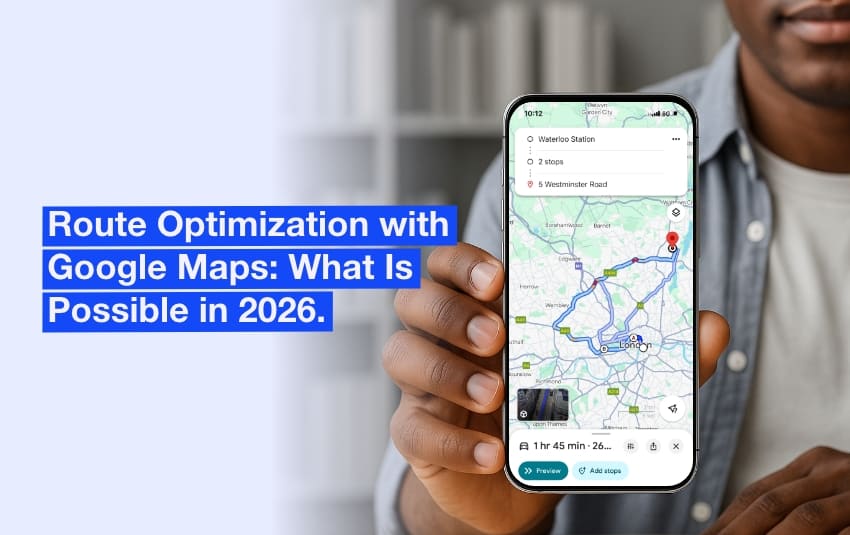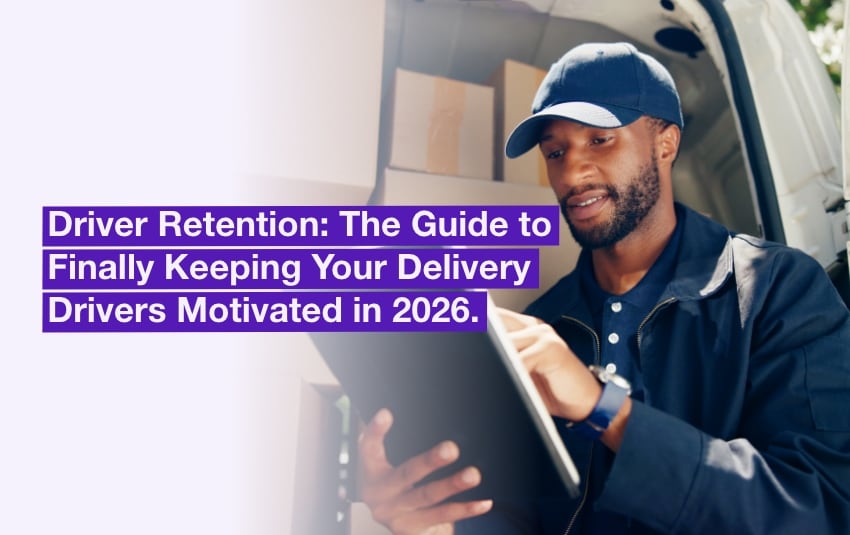The Benefits of a TMS for your Transport Company
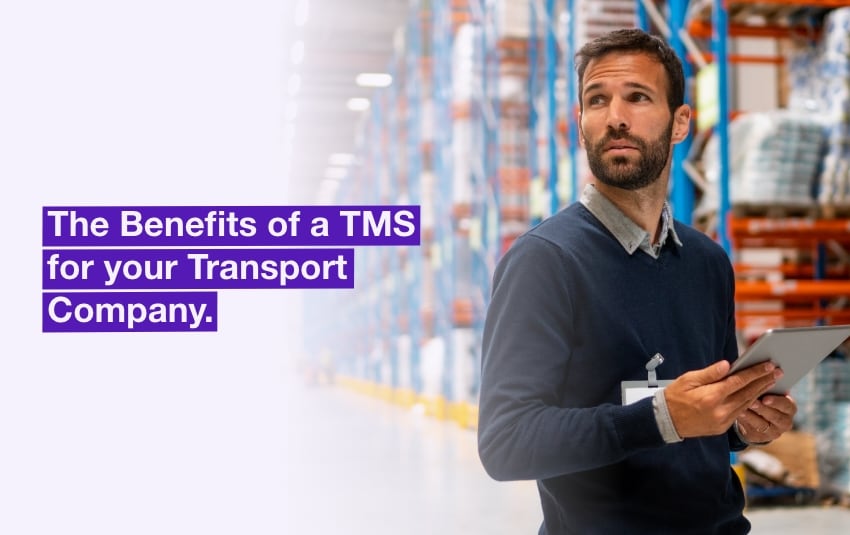
As a transport company, you are constantly looking to optimise your delivery processes. Reducing the number of kilometres travelled, optimising loads and deliveries, limiting empty miles, meeting deadlines, reducing logistics costs: these are all issues to which you are attentive. And you’re thinking about opting for TMS (Transport Management System) software to manage these processes more effectively.
This article is for you. We answer your main questions:
- What is TMS transport software and how does it work?
- Why adopt a TMS to optimise your deliveries?
- Essential criteria for choosing the right TMS for your business
- The 5 best practices for successful implementation
1. What is TMS transport software and how does it work?
TMS (Transport Management System) software is an IT tool designed to optimise the management of freight transport.
It enables operators to plan, execute, optimise and monitor transport operations in real time. It centralises all their transport data and helps them to manage their business on a daily basis, with 2 main objectives in mind: optimising their deliveries and reducing their logistics costs.
There are several types of TMS, adapted to the specific needs of companies, whether they are hauliers, shippers or retailers.
- The Shipper TMS generates transport orders and helps you choose your carrier.
- The Carrier TMS (service provider TMS) manages transport orders, schedules them and invoices them.
These tools have a number of common functions, but also functions that are specific to the charterer or haulier business.
In this article, we will concentrate on carrier TMS solutions. These service provider TMS tools are aimed at transport companies, as well as companies for which delivery plays a key role, such as the supply of home-delivered meals or medical equipment.
The 6 main functions of a transport TMS include:

The 6 main functions of a transport TMS.
- Management of orders and costs: The software centralises your customer information and requests, integrates with your ERP and CRM systems, calculates rates, tracks your transport costs and automates your invoicing.
- Fleet management and assignment of transport missions: The transport TMS automatically assigns your vehicles and drivers according to available resources and delivery constraints (volume, weight, deadline, location, etc.).
- Planning pick-up and delivery operations: The transport software plans and optimises your routes to reduce your deadlines and logistics costs.
- Real-time tracking: It monitors the execution of transport missions and ensures accurate tracking of your vehicles.
- Generation of transport and tracking documents: It facilitates your administrative and sales management and guarantees the regulatory compliance of your transport documents.
- Performance analysis: It provides key performance indicators (KPIs) and dashboards to help you improve your efficiency and reduce your costs (cost per weight or per km, statistics per driver, carbon footprint, etc.).
Not all TMSs offer all these functions. For example, some are more limited to organising routes rather than optimising them. Conversely, software specialising in route optimisation, such as AntsRoute, is gradually integrating the functions of a TMS.
Some TMSs also include multimodal transport management (road, air, river or rail), although road haulage remains the most important mode in the UK, accounting for 81% of the volume transported.
It’s up to you to make sure that your choice includes the features you really need. We’ll talk more about this at the end of this article.

TMS software generates costs, but optimises productivity and profitability.
2. Why adopt a TMS to optimise your deliveries?
While the adoption of TMS software inevitably represents additional costs, it nevertheless offers you a significant number of advantages, which benefit both your productivity and your profitability.
Reducing costs and improving profitability
One of the main benefits of a TMS is the reduction in logistics costs for all your journeys.
To do this, it uses advanced route planning and intelligent resource allocation functions.
It automatically assigns vehicles and drivers according to availability, delivery constraints and lorry occupancy rates, to produce an optimised transport plan, improve the fill rate of your trucks and avoid empty runs. And thanks to advanced algorithms, it selects the shortest, most economical and least polluting routes, taking into account traffic conditions, road restrictions, toll costs and delivery constraints.
These global optimisations help you to reduce your fuel consumption and increase the use of your vehicles, while minimising your environmental impact.
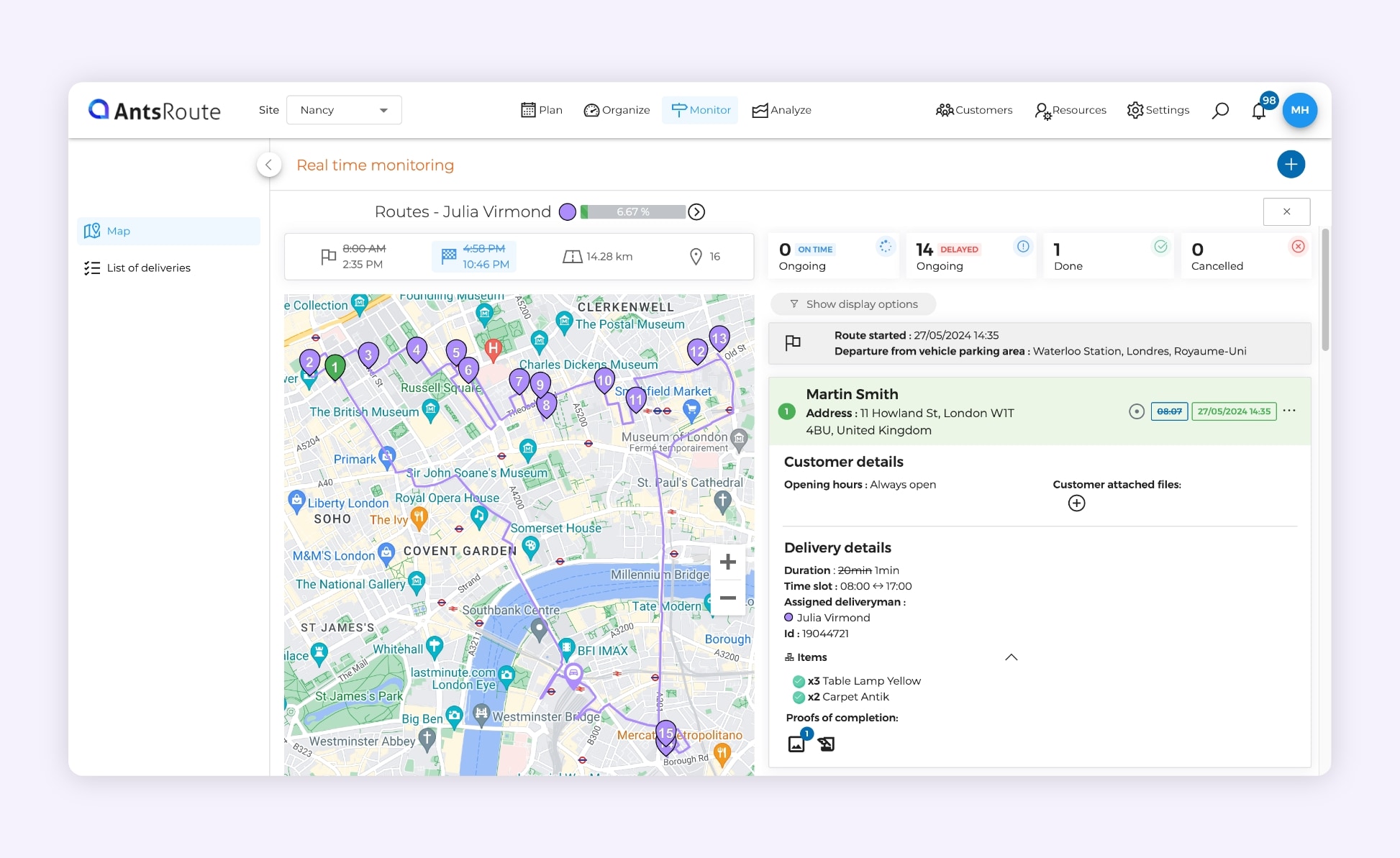
Optimising transport routes on AntsRoute.
Improved tracking and transparency
Reliability is a key criterion for keeping your contracts and winning new ones. And that means inspiring confidence by meeting delivery deadlines and communicating clearly at every stage: your customers need to know exactly when and how their goods will be delivered.
A TMS offers advanced real-time tracking functions, giving you greater control over all your transport operations.
GPS tracking systems for your vehicles can be integrated into your TMS. This means you can accurately track the progress of your deliveries and receive automated alerts in the event of delays, anomalies or unforeseen events. This is useful for quickly adapting your schedules if necessary, but also for communicating accurately with your customers and partners.
TMS transportation management software generally offers detailed tracking of order status, as well as the option of sending automatic notifications. This means that your customers are kept informed in real time about the status of their deliveries, building trust and loyalty.
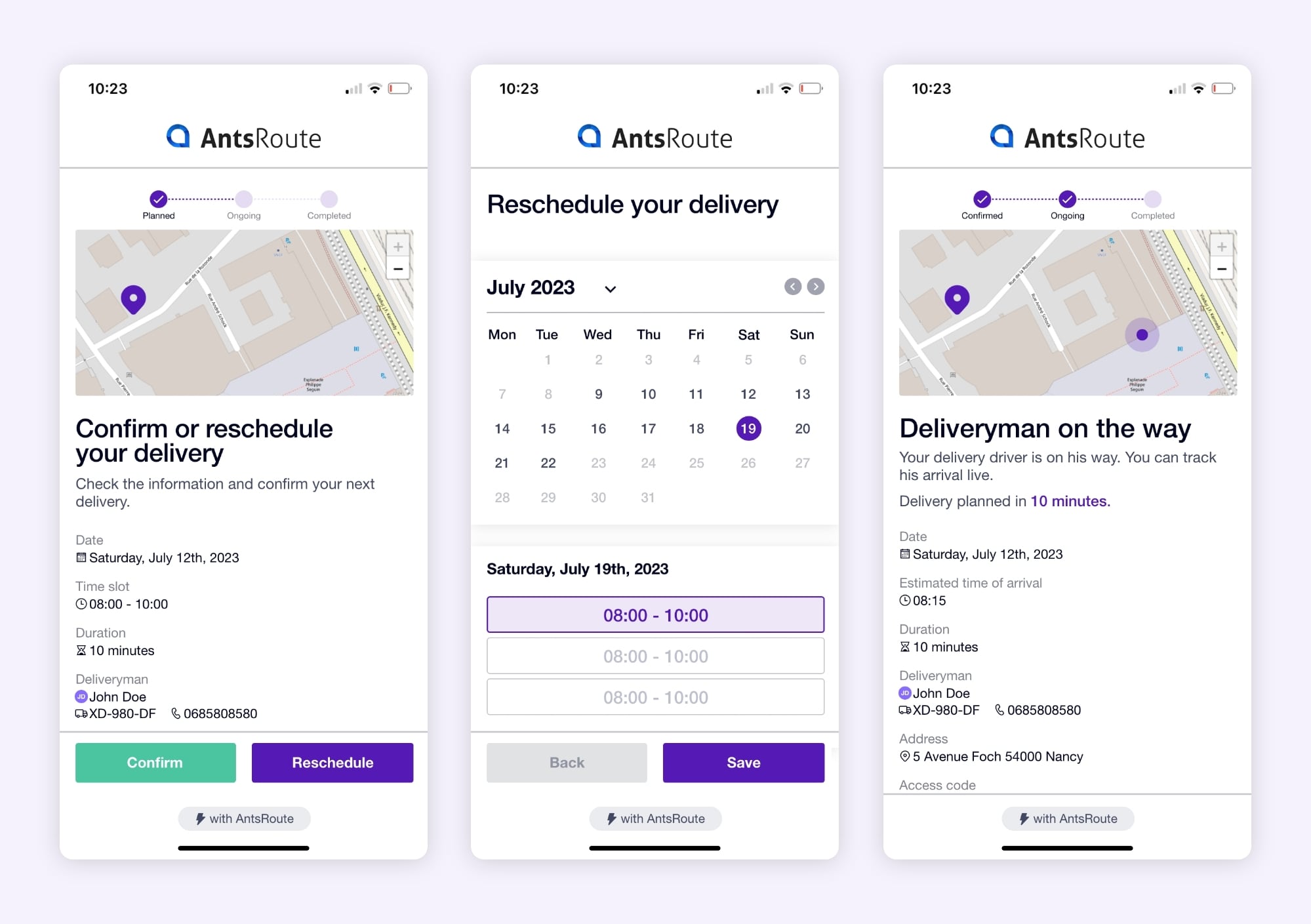
AntsRoute link enabling customers to reschedule and track their deliveries online.
Time savings and process automation
But the benefits don’t stop there. Adopting a TMS also considerably reduces the time spent on administrative tasks (managing orders, schedules, calculating transport costs, invoicing, generating transport documents) and avoids human error, which can generate significant costs. Not to mention the delivery delays and penalties avoided, thanks to better management of the delivery schedule.
TMS software also records all data relating to shipments, guaranteeing complete traceability of your transport operations in a single application. This is an invaluable support when it comes to managing audits and your regulatory obligations.
By eliminating time-consuming tasks and by documenting and accelerating processes, the TMS enables transport companies like yours to become more efficient and competitive.

The 3 reasons to adopt TMS software.
3. Essential criteria for choosing the right TMS transport management software for your business
Compatibility with existing tools
An effective TMS must integrate seamlessly with the solutions you already use, such as your ERP (enterprise resource planning system), your CRM (customer relationship management) and your GPS geolocation system. Make sure that a connection is possible at the very least via an API (Application Programming Interface). This interconnection will ensure smooth management of information and avoid duplication and transcription errors.
Ease of use and team training
Software that is too complex can slow down its adoption. Check beforehand that the interface is sufficiently intuitive, and don’t forget to provide training in advance, to ensure that your teams get to grips with the software quickly.
Scalability and adaptation to specific needs
Needs vary according to the size of your business. Your TMS must meet your current needs, but must also be able to support the growth of your business. Take the time to analyse the functionalities you really need in the short and medium term and compare them with those on offer.
Data security and regulatory compliance
You process the data of both your principals and end consumers. You therefore have an obligation to protect their data. Check that the TMS you choose will enable you to comply easily with the security standards and regulations in force, such as the GDPR.
Pricing and rates
Prices vary widely from one software package to another. In particular, you will have to choose between licensing software and SaaS tool hosted in the cloud on a subscription basis. If you opt for a licence, don’t overlook the costs of maintenance and updates. You can find out more about prices and the cost differences between these 2 models in our dedicated article.
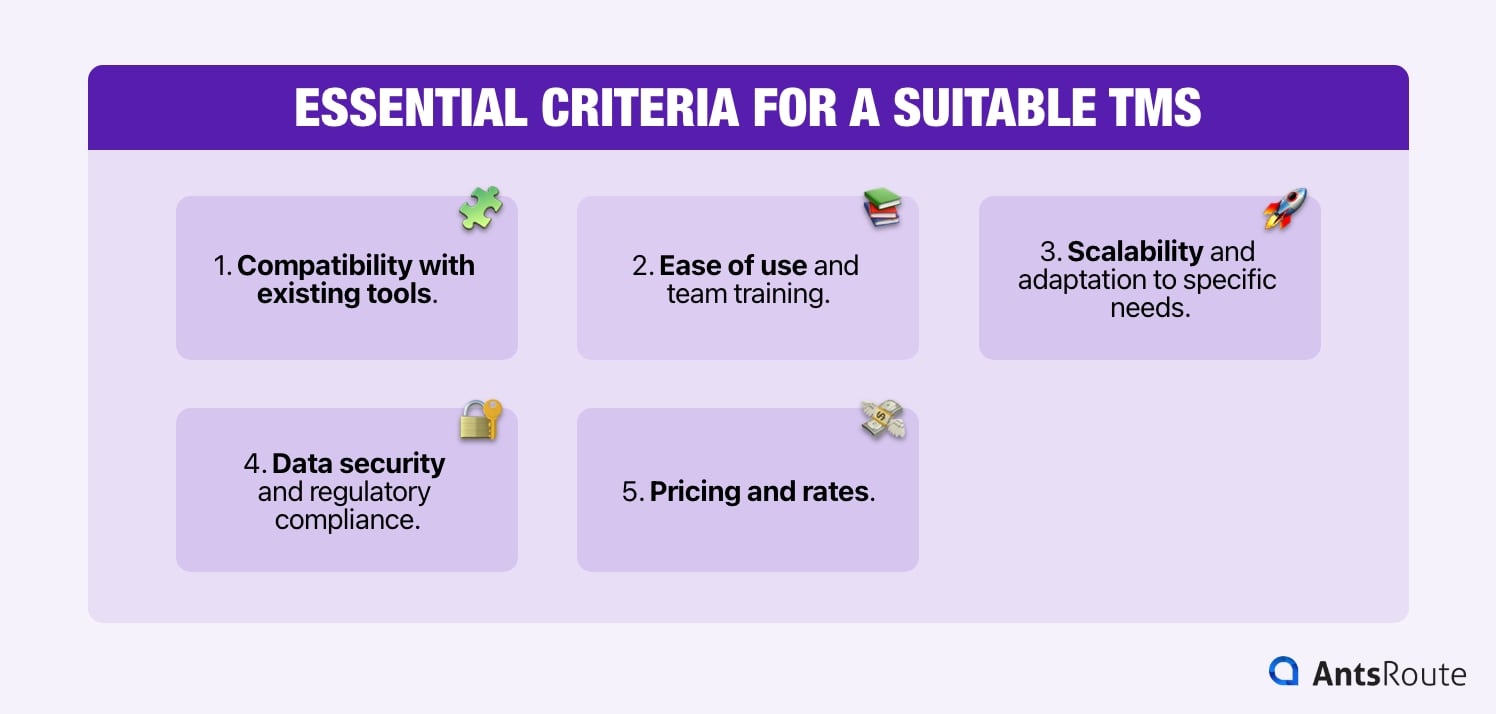
The 5 essential criteria for choosing the right TMS transport management software for your business.
4. Implementation and 5 best practices for successful adoption of your TMS
To avoid making a mistake when choosing your TMS transport management software, we recommend that you follow the steps below.
- Assessing your needs: Precisely define your expectations, your objectives, your constraints and the functionalities you really need. Route planning takes up too much of your time, your customers are constantly calling to find out the status of their deliveries, your staff are very reluctant to use complex IT tools, etc. You need to plan your routes more quickly, with better traceability and information sent automatically to your customers, but without the tool being difficult for your teams to get to grips with.
- Choosing the TMS: Select a software package based on the needs and criteria actually established in the first phase. Pay particular attention to the software’s user-friendliness and any options that are not compulsory, which could make it more complex to use and increase your bill. It’s best to choose software that’s suited to your business sector.
- Integrating and testing: Check whether you can test the software or get a demonstration beforehand. Make sure you are clear about the data sets required, what can be configured and what you can or cannot adapt to your business. Then integrate your data and test the tool in real-life situations to check that it works properly, before extending it to the whole team.
- Training your teams: Make sure you plan well for this training phase and find out in advance about the assistance you can call on if you need it (chatbot, live after-sales service, guarantees in the event of a breakdown, etc.). This will save you a lot of trouble later on.
- Monitoring and continuous improvement: Once the testing and training phase is over, only live use will enable you to really appreciate the suitability of the software and request adjustments if necessary. Make sure you discuss this point with your publisher beforehand. Actual use of the software will also enable you to monitor and evaluate your performance (delivery times, error rates, customer satisfaction), and if necessary improve your processes.

5 best practices for successful adoption of your TMS.
The adoption of a transport management software TMS is a strategic lever for any transport company wishing to optimise its deliveries, reduce its logistics costs and offer a quality service to its customers. By choosing the right TMS or route optimisation software and following good implementation practices, you can turn your logistics into a real competitive advantage. At AntsRoute, we’re here to help.
WRITTEN BY

Maryline Lakh
Maryline worked for a major logistics company for 15 years. Since 2022, she has been an expert in communication and freelance writer for positive-impact logistics companies. She is passionate about new sustainable logistics solutions and writes for several clients, including AntsRoute.
Free 7-day trial | No credit card required
Contenu
- 1. What is TMS transport software and how does it work?
- 2. Why adopt a TMS to optimise your deliveries?
- Reducing costs and improving profitability
- Improved tracking and transparency
- Time savings and process automation
- 3. Essential criteria for choosing the right TMS transport management software for your business
- Compatibility with existing tools
- Ease of use and team training
- Scalability and adaptation to specific needs
- Data security and regulatory compliance
- Pricing and rates
- 4. Implementation and 5 best practices for successful adoption of your TMS

